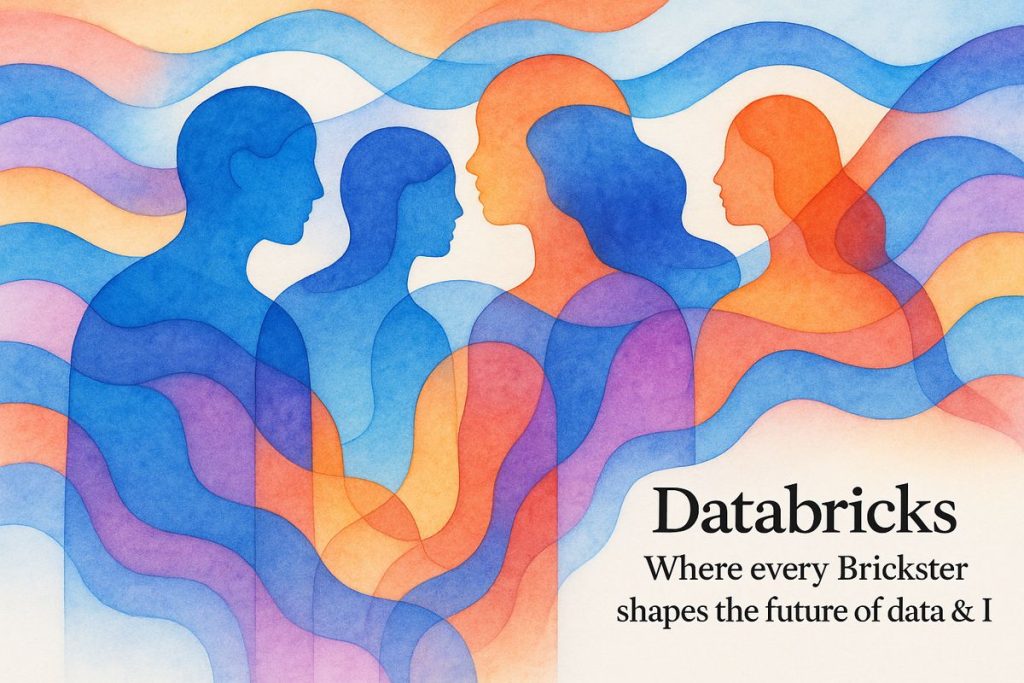Databricks stands out as one of the best places to work in the Bay Area in 2025 because of its unique and lively culture. Employees, called “Bricksters,” share a strong sense of belonging and pride, and the company is known for its open leadership and focus on customers. Databricks celebrates diversity with active support groups and real progress in inclusion. Their achievements and fun traditions make working there feel both exciting and welcoming, earning them top spots on major best workplace lists.
Why is Databricks considered one of the best workplaces in the Bay Area in 2025?
Databricks is recognized as a top Bay Area workplace in 2025 for its unique culture, strong employee identity (“Bricksters”), a focus on customer obsession, transparent leadership, commitment to diversity and inclusion, and consistent recognition on Fortune and Glassdoor’s best workplaces lists, making it a standout in tech.
The Percolating Pressure of the Bay Area
If you’ve ever tried to find a quiet corner in a Palo Alto cafe, you know the Bay Area buzz: every table a ground zero for some hyperspectral startup pitch or a tired engineer eyeing another shot of espresso. Into this palimpsest of innovation, Databricks—yes, the same company that’s been quietly (or not so quietly) reshaping data and AI—has landed on Fortune Magazine’s Best Workplaces in the Bay Area for 2025. Again. That’s two years running, which, in tech dog years, feels like a century.
It’s no small feat. With titans like Google and upstarts like Snowflake forever lurking, every accolade here requires more than just free kombucha. Databricks has somehow managed to blend a culture that’s both fiercely competitive and, dare I say, oddly cozy. I had to stop and ask myself: what’s their secret? Is it the office espresso machine, or something in the air—a faint scent of possibility mixed with the faint anxiety of continuous integration builds?
But let’s get specific, because broad strokes don’t do justice in a place where even the baristas can recite TensorFlow release notes. Databricks doesn’t just splash its name across “Best Of” lists. It steeps its reputation in tangible achievements: a top 5 finish on LinkedIn’s 2020 Top Startups List and a spot on Glassdoor’s Best Places to Work 2025 (here’s the official blog proof). The momentum’s almost audible—a low hum, like the server fans in their datacenters.
The Brickster Identity: More Than a Name
Inside Databricks, employees don’t just punch in as “staff” or “associates.” They’re “Bricksters.” At first, I’ll confess, I rolled my eyes. It sounded like one of those forced nicknames from corporate branding consultants. Then I sat in on a team call (well, eavesdropped is maybe more accurate—старое хобби), and I heard it used with an effortless camaraderie that borders on the familial.
This isn’t just corporate folklore. The identity comes alive in annual company “kickoffs” where, legend has it, even the engineers are coaxed into karaoke; in weekly all-hands with CEO Ali Ghodsi, whose dry wit cuts through the technical jargon; and in monthly team-building budgets—generous enough that, last March, I found myself in a heated debate over whether laser tag actually builds trust. Spoiler: bruises heal, pride takes longer.
What does it feel like? Oddly, it reminds me of the first time I bit into a perfectly balanced cortado—sharp, warm, and unexpectedly memorable. The Brickster moniker isn’t just window dressing; it’s a badge of belonging. If you’re there, you’re in. If you’re not, you almost wish you were.
Principles, Practices, and a Hint of Paradox
Now, every company claims to be “customer-obsessed,” but at Databricks, this isn’t just a bumper sticker. It’s a principle stitched into daily standups and product roadmaps. Customer feedback gets dissected like a frog in a seventh-grade science class—sometimes messy, always revealing. In fact, their Customer Obsession mantra drives the kind of innovation that lands them contracts with NASA and the New England Journal of Medicine (yes, really).
Still, transparency is their north star. Ali Ghodsi and Chief People Officer Dr. Amy Reichanadter keep the org chart flat—rumor has it you can Slack the CEO and, nine times out of ten, get a reply before you finish your coffee. That’s not just talk; it’s operationalized. If you’ve ever felt invisible in a corporate monolith, this is a sharp, citrusy contrast.
I’ll admit, I once doubted the value of open Q&As during all-hands. Wouldn’t it devolve into a sea of awkward silences and off-topic grumbles? Turns out, the opposite happened: employees used the forum to challenge, praise, and, occasionally, roast leadership—leading to real shifts in policy. Huh. Color me impressed, and mildly envious.
Recognition, Resilience, and the Delightful Mess of Diversity
Databricks’ trophy shelf is getting crowded. Beyond Fortune and Glassdoor, they’ve bagged the Fair Pay Workplace certification every year since 2021—a rare hat trick, especially considering the Bay Area’s notorious salary labyrinths.
But perhaps the most telling measure is their approach to diversity, equity, and inclusion (DEI). Seven active Employee Resource Groups—Queeries Network, Veterans Network, Black Employee Network, Women’s Network, LatinX, Asian, and more—dot the company’s Slack landscape. It’s not performative, either. Since 2019, representation for traditionally marginalized groups has climbed, and fast. You can trace the data yourself on their official diversity report. Still, progress is uneven—one year saw a dip in technical hires for women, which Dr. Reichanadter addressed head-on in a candid memo. A bit of vulnerability, a lot of resolve.
This focus on inclusion isn’t just a moral box-tick. It’s their secret sauce for unlocking new ways to wrangle data and AI. I once joined a Databricks-hosted hackathon where a team—three languages, five time zones—built a
